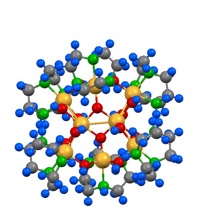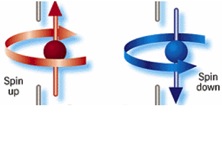There’s a two part essay titled, Regulating Nanotechnology Via Analogy (part 1, Feb. 12, 2013 and part 2, Feb. 18, 2013), by Patrick McCray on his Leaping Robot blog that is well worth reading if you are interested in the impact analogies can have on policymaking.
Before launching into the analogies, here’s a bit about Patrick McCray from the Welcome page to his website, (Note: A link has been removed),
As a professor in the History Department of the University of California, Santa Barbara and a co-founder of the Center for Nanotechnology in Society, my work focuses on different technological and scientific communities and their interactions with the public and policy makers. For the past ten years or so, I’ve been especially interested in the historical development of so-called “emerging technologies,” whenever they emerged.
I hope you enjoy wandering around my web site. The section of it that changes most often is my Leaping Robot blog. I update this every few weeks or so with an extended reflection or essay about science and technology, past and future.
In part 1 (Feb. 12, 2013) of the essay, McCray states (Note: Links and footnotes have been removed),
[Blogger’s note: This post is adapted from a talk I gave in March 2012 at the annual Business History Conference; it draws on research done by Roger Eardley-Pryor, an almost-finished graduate student I’m advising at UCSB [University of California at Santa Barbara], and me. I’m posting it here with his permission. This is the first of a two-part essay…some of the images come from slides we put together for the talk.]
…
Over the last decade, a range of actors – scientists, policy makers, and activists – have used historical analogies to suggest different ways that risks associated with nanotechnology – especially those concerned with potential environmental implications – might be minimized. Some of these analogies make sense…others, while perhaps effective, are based on a less than ideal reading of history.
Analogies have been used before as tools to evaluate new technologies. In 1965, NASA requested comparisons between the American railroad of the 19th century and the space program. In response, MIT historian Bruce Mazlish wrote a classic article that analyzed the utility and limitations of historical analogies. Analogies, he explained, function as both model and myth. Mythically, they offer meaning and emotional security through an original archetype of familiar knowledge. Analogies also furnish models for understanding by construing either a structural or a functional relationship. As such, analogies function as devices of anticipation which what today is fashionably called “anticipatory governance.”They also can serve as a useful tool for risk experts.
McCray goes on to cover some of the early discourse on nanotechnology, the players, and early analogies. While the focus is on the US, the discourse reflects many if not all of the concerns being expressed internationally.
In part 2 posted on Feb. 18, 2013 McCray mentions four of the main analogies used with regard to nanotechnology and risk (Note: Footnotes have been removed),
Example #1 – Genetically Modified Organisms
In April 2003, Prof. Vicki Colvin testified before Congress. A chemist at Rice University, Colvin also directed that school’s Center for Biological and Environmental Nanotechnology. This “emerging technology,” Colvin said, had a considerable “wow index.” However, Colvin warned, every promising new technology came with concerns that could drive it from “wow into yuck and ultimately into bankrupt.” To make her point, Colvin compared nanotech to recent experiences researchers and industry had experienced with genetically modified organisms. Colvin’s analogy – “wow to yuck” – made an effective sound bite. But it also conflated two very different histories of two specific emerging technologies.
While some lessons from GMOs are appropriate for controlling the development of nanotechnology, the analogy doesn’t prove watertight. Unlike GMOs, nanotechnology does not always involve biological materials. And genetic engineering in general, never enjoyed any sort of unalloyed “wow” period. There was “yuck” from the outset. Criticism accompanied GMOs from the very start. Furthermore, giant agribusiness firms prospered handsomely even after the public’s widespread negative reactions to their products. Lastly, living organisms – especially those associated with food – designed for broad release into the environment were almost guaranteed to generate concerns and protests. Rhetorically, the GMO analogy was powerful…but a deeper analysis clearly suggests there were more differences than similarities.
McCray offers three more examples of analogies used to describe nanotechnology: asbestos, (radioactive) fallout, and Recombinant DNA which he dissects and concludes are not the best analogies to be using before offering this thought,
So — If historical analogies teach can teach us anything about the potential regulation of nano and other emerging technologies, they indicate the need to take a little risk in forming socially and politically constructed definitions of nano. These definitions should be based not just on science but rather mirror the complex and messy realm of research, policy, and application. No single analogy fits all cases but an ensemble of several (properly chosen, of course) can suggest possible regulatory options.
I recommend reading both parts of McCray’s essay in full. It’s a timely piece especially in light of a Feb. 28, 2013 article by Daniel Hurst for Australian website, theage.com.au, where a union leader raises health fears about nanotechnology by using the response to asbestos health concerns as the analogy,
Union leader Paul Howes has likened nanotechnology to asbestos, calling for more research to ease fears that the growing use of fine particles could endanger manufacturing workers.
”I don’t want to make the mistake that my predecessors made by not worrying about asbestos,” the Australian Workers Union secretary said.
I have covered the topic of carbon nanotubes and asbestos many times, one of the latest being this Jan. 16, 2013 posting. Not all carbon nanotubes act like asbestos; the long carbon nanotubes present the problems.

